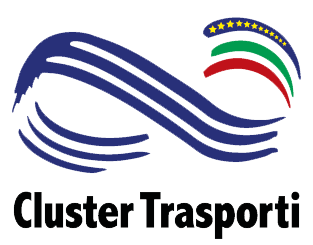Next Generation Liguria, Trombetta (Cluster Trasporti): promoting research and innovation

Published 25 March 2021
The “Next Generation Liguria” digital event took place this morning with the goal of enhancing the HighTech District as an engine of development for the future of the area. The event is the starting point for defining a roadmap with representatives of the institutional and academic world of the territory, of technological companies and of scientific research.
The Ligurian Technological District on Integrated Intelligent Systems (SIIT) – one of the organizers of the event together with the University of Genoa – is promoting the excellences of the Ligurian territory. In particular to favor the technology transfer among a cluster of some 300 SMEs and innovative startups with larger companies in the area to create a strategic “supply chain” of the district in close connection with the national network.
The Research Macro-Infrastructure consists of a complex of 4 research infrastructures on themes of recognized regional interest: IR Smart Polygeneration Microgrid; IR ITS – Transport and Logistics; IR ICT – Security – Territory monitoring; IR Automation-Industry 4.0.
Antonella Trombetta, Secretary General of the National Transport Cluster – a speaker at the table dedicated to the “National Cluster Network” – explained that the transport context is experiencing a phase of change along the axes of energy transition and connected and automated cooperative mobility.
“The Cluster recognized the need to develop an ‘Italian way’ focusing on new paradigms of mobility and transport to compete as Country System within the European Union programs – stressed Trombetta -.
The Cluster brings together major national, industrial and scientific players operating in the rubber, iron, water and intermodal sectors. The goal is to identify synergies between the various supply chains to efficiently address the available resources through partnerships for new research projects, reinforcing technology transfer and public and private investments to foster innovation through the dialogue between research and the production context “.
Trombetta explained that, in a context of operational or connected and autonomous mobility, the foundation lies in the energy transition and decarbonization in a circular economy circuit, in order to meet the new mobility paradigms that put the user at the center. “We-Sistema Italia- have all the capabilities to act as a promoter rather than a follower of evolutions happening in the world. Transport innovation requires an approach to mobility in a different way, with national networks to tackle the enabling technologies – transversally and complementary – between different sectors, also in collaborations with other Clusters, whose technologies are impacting the mobility sector. The Cluster focuses on values such as interconnection, energy transition, and the circular economy. The production system cannot function without the concept of an intelligent factory”.
Today we are reviewing the action plan in view of the strategic Agenda 2021-2023: the idea is to create conditions for the implementation of regional smart specialization strategies. In support of this vision, the Cluster has identified 11 research trajectories and 20 of innovation to define the keywords of research in transport: smart grid integrated “.
Finally, Trombetta summarized the data and objectives of the Cluster which brings together 37 companies, 8 research centers, 15 university centers, 200 thousand workers and 6B€ in investments: “We are a national interlocutor in the sector by actively participating in the development of national research and innovation communities. The Cluster gives the possibility to create networks of knowledge and skills by sharing common objectives: we are happy that SIIT is part of our network together with the University of Genoa, with the hope that collaboration with the other Clusters will be increasingly deepened for a more global vision “.
Other protagonists of the national cluster sector also took part in the working table.
Laura Morgagni, general manager of the National Smart Communities Cluster, explained that the Clusters are created to network the best skills already existing at the local level to reach a national dimension.
“As a national cluster we aim to build resilient infrastructures that adapt to conditions through a greater analysis of potential risks, leveraging communities and therefore the human factor – explains Morgagni -. In the field of transport and logistics, by 2030 we aim to ensure mobility capable of integrating different forms of transport into a single service that is sustainable, accessible and flexible and adapted to the demand for people and vehicles, as well as offering a valid alternative to use of their own vehicle by at least 30% of the population in Italy. Following the pandemic, the key role of the state innovator and the function of the clusters will have an increasingly important role, with a view to a convergence between regional and national dimensions “.
Cristina Leone, president of the National Aerospace Cluster also emphasized the importance of a common strategy at the nation level to enhance the territories.
“Aerospace is an industry based on knowledge, research and development. Our work plan was recently updated due to Covid-19: we have 90% of the planes on the ground. Now it is necessary to rethink a roadmap for the restart and at the same time make the most of the new opportunities for the space world. The space is accessible to many start-ups working in the world of services. In the aeronautical world, the application of digital twin solutions, AI technologies, big data, augmented and virtual reality, IoT is fundamental. The Liguria region will be a protagonist in the aerospace cluster in the coming years thanks to exceptional laboratories and remarkable infrastructures in the area as well as the skills of universities and research centers.
Finally, the National Intelligent Factory Cluster, which has active programs with Europe, the US and China, aims to implement a national strategy based on research and innovation for the application of innovative technologies and the competitiveness of advanced manufacturing in the international industrial scenario.


